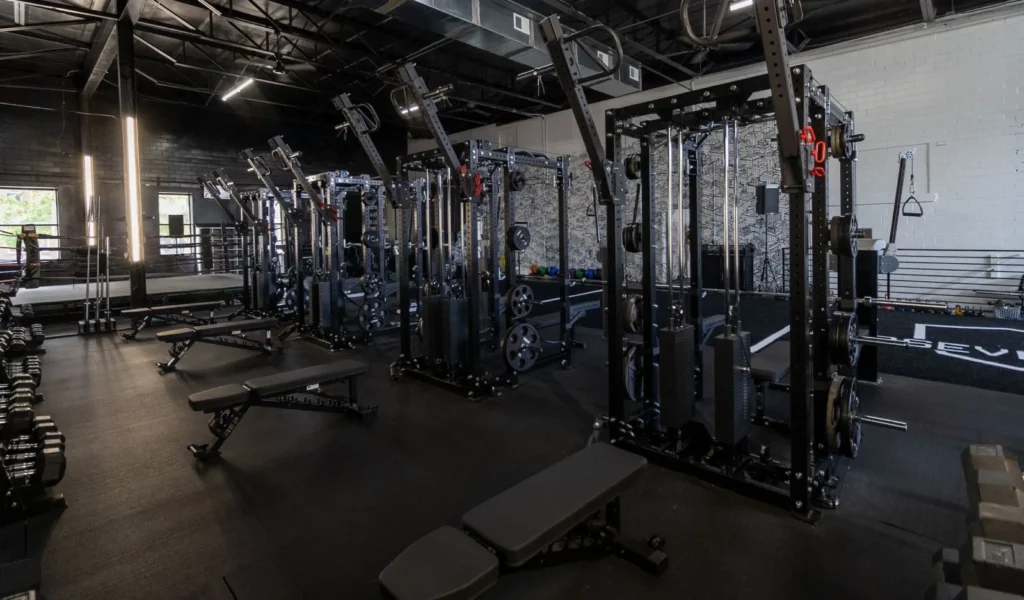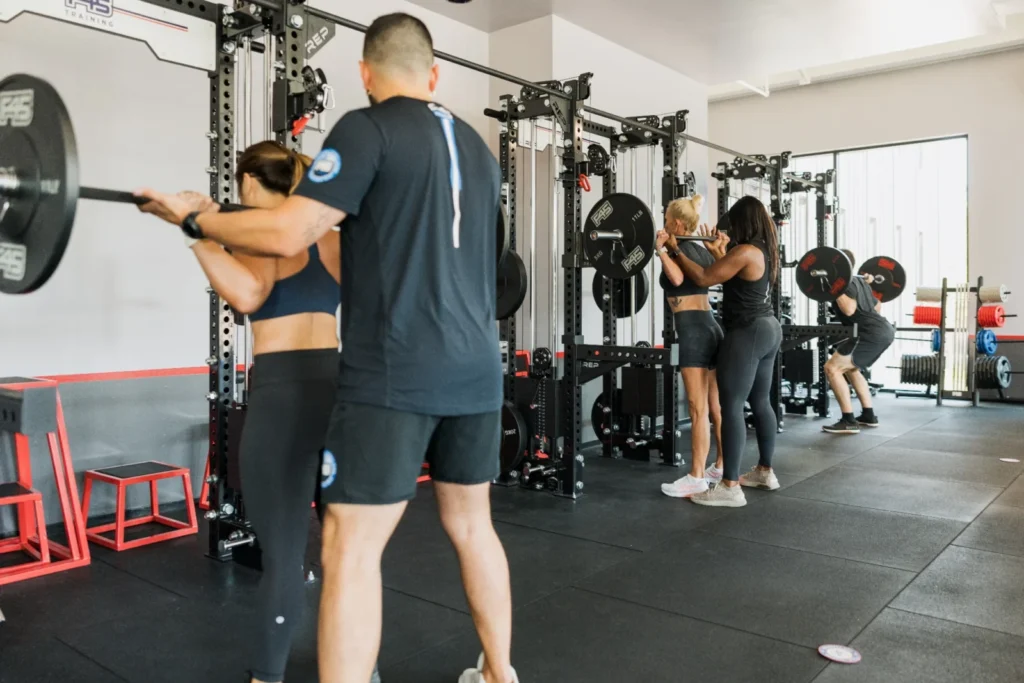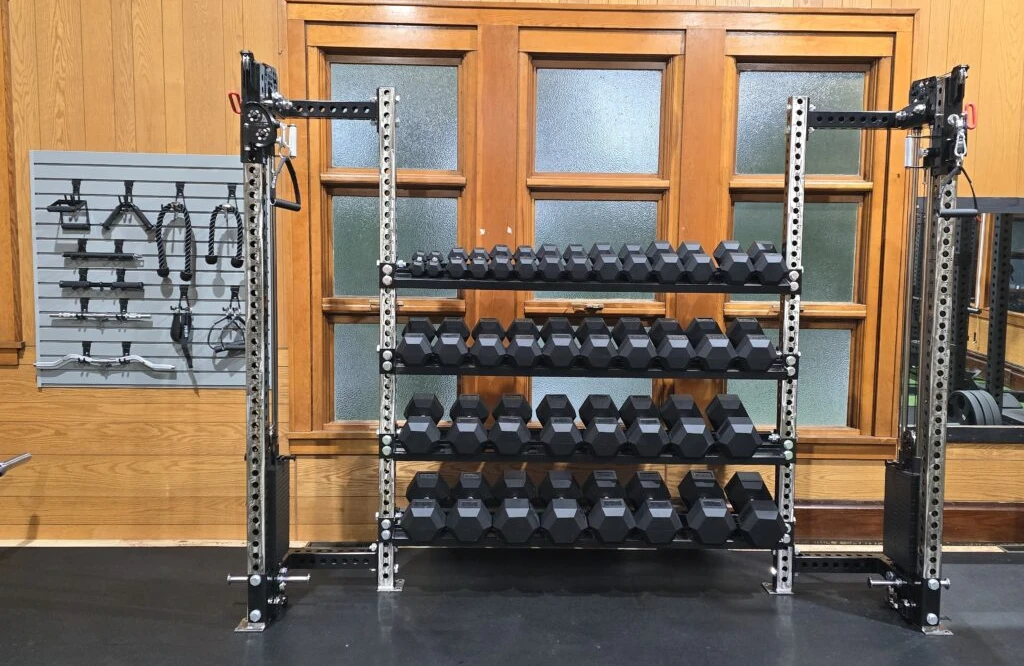How REP Fitness is helping gyms rethink equipment, flow and ROI
In today’s ultra-competitive fitness market, bigger isn’t always better. For gym operators looking to maximize ROI and member satisfaction, every square foot matters. Cramped layouts, bulky machines and underutilized zones can work against your business goals. Instead, success often lies in doing more with less: offering a smart, streamlined and highly functional space that delivers both versatility and value.
Rethinking Space: Why Bigger Isn’t Always Better
That’s where REP Fitness shines. The brand’s ethos is built on the very idea that oversized doesn’t equal better. Rather than flooding floors with massive rigs, REP prioritizes modular, space-conscious equipment designed to withstand heavy use while enhancing the user experience.
“Here at REP, we don’t view overbuilt or oversized equipment as a positive and that sets us apart from much of the industry,” says Sam Pizer, REP Fitness VP of Product Development. “While other companies focus on making equipment massive, we focus on building robust products that can withstand the demands of a commercial gym while maximizing space.”
This emphasis on space efficiency is realized through a clear commitment to multifunctionality. “Whether it’s a customer with a home gym or a large commercial facility, we understand that space is often limited. As mentioned in our design ethos, bigger is not always better,” Pizer adds. “Focusing on multifunctionality helps our customers get the best return on investment (ROI).”
The result? Equipment that delivers versatile performance without compromising on biomechanics or durability. “We design our equipment to have great biomechanics despite the added functionality. If it doesn’t enhance the experience, we leave it out.”
For commercial operators, that balance of performance and simplicity is key to standing out. “REP’s thoughtful designs and modularity allow gym owners to maximize space and value, while truly catering to the needs and wants of their members,” says Pizer. “By providing reliable, user-friendly equipment, gyms can foster member confidence and pride in their fitness environment, enhancing the overall experience and driving long-term retention.”

Modular Design That Grows With You
That philosophy helped win over F45 Training, a global franchise known for its group workouts. As strength training demand grew, the company realized its equipment and programming needed an upgrade. “By investing in a PR-5000 with a Dual-Sided Athena, they tapped into the rising strength training trend, re-engaged their members and expanded their programming library with over 600 new movements,” says Pizer.
The PR-5000 is emblematic of REP’s approach: modular and rugged, and built to help gym owners adapt and scale. “You can start with a base rack and add ATHENA cable towers to introduce functional trainer capabilities within the same footprint,” Pizer explains. “As your space expands, you can add storage or other accessories to improve organization and functionality.”
This kind of modular thinking is exactly what drew REP-sponsored athlete Mike Adaila, owner of Denver’s Physical Culture Club, to the PR-5000 and ARES 2.0 systems. “We have four of those racks at our gym. It’s kind of like having four mini gyms in one big gym,” Adaila says. “We do circuit-style training with three people per rack rotating through exercises — it’s extremely efficient.”
Other innovations, like the ARES 2.0, take multifunctionality to another level. With dual weight stacks, the system allows two users to train simultaneously without interference — an important factor in high-traffic environments. “Using multi-use stations, gyms can eliminate the need for multiple standalone machines, saving space and increasing ROI,” says Pizer. “The proximity of users can also help gym operators get more out of their coaching staff, as fewer coaches are needed to monitor workouts in a more compact area.”
Even the feel of the equipment is designed to match the quality of stand-alone machines. “You won’t feel a difference when using the ARES for true isometric exercises, or the Adonis for the 1:1 lat pulldown and low-row functions,” says Pizer. “These machines combine compactness with top-tier performance, providing excellent biomechanics and durability.”
Adaila also highlights how the dual pulleys on the ARES support more athletic, real-world training. “Doing rotational or cross-body movements on the cables is super functional for our members who are out hiking, skiing or trail running,” he says. “It helps them move better outside the gym.”
Adding cable systems like the Athena unlocks another level of functionality. “Anytime you can integrate a cable system into your facility, you open up a world of new opportunities,” says Joe Koenecke, REP Fitness National Retail Sales Manager. “You can pair it with our Pegasus Seat to perform single-arm lat pulldowns or use traditional attachments for bodybuilding movements like tricep extensions, biceps curls and lateral raises.”
“The benefit of the Athena cable system is that no additional floor space is taken up by adding a functional trainer,” he continues. “It’s typically more cost effective than your traditional off-rack cable systems.”

Smart Planning for Sustainable Success
REP’s commitment to space optimization extends beyond equipment into the planning phase. Their design software and consultative process help facilities visualize their ideal layout with precision. “From our initial calls to learn about your clientele and training methodology, to creating 2D and 3D renderings to help you visualize your dream space, we are here each step of the way,” says Koenecke.
That proactive approach helps avoid one of the most common pitfalls in gym design: poor planning. “The last thing you want to do if you’re opening a new facility is to have to make decisions to meet a timeline, rather than to create the best possible training space for your clientele and coaches,” Koenecke notes. “We always recommend starting early. Give yourself time to plan the flow of your space and pick the right equipment that will be with you for years.”
Looking ahead, REP sees its modular ecosystem playing a pivotal role in helping operators future-proof their facilities. “There’s no surprise that commercial facilities of all types are anticipated to grow,” says Koenecke. “Curating a space that’s multi-purpose, while minimizing the floor space needed to achieve it, allows you to get more members in your doors without feeling claustrophobic.”
That future-facing mindset is also reflected in REP’s upcoming Smith Machine. “It will elevate the modularity of our rack systems, allowing even more functionality within a compact footprint. You can expect this Smith Machine to be buttery smooth and outperform other standalone options,” Pizer says.
Ultimately, REP Fitness offers more than equipment — it offers a new way of thinking about gym design. By prioritizing thoughtful engineering, modularity and multifunctionality, the company empowers operators to create smarter spaces that meet today’s demands and adapt to tomorrow’s growth. And that’s a win for owners, members and margins alike.

















 (via nickxrhoden/TT)
(via nickxrhoden/TT)









































